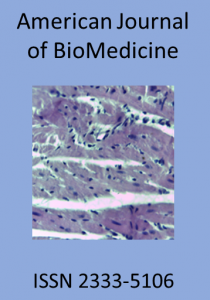Abstract
Breast cancer is the most prevalent malignancy among women, with an estimated 290,000 new cases diagnosed in the United States in 2014. It is classified into distinct molecular subtypes with divergent therapeutic and prognostic implications. Triple negative breast cancer (TNBC) is classified as estrogen receptor-negative (ER-), progesterone receptor-negative (PR-), and HER2-negative (HER2-). TNBC is associated with the most aggressive disease course, a lack of targeted therapies, and the worst prognosis. Novel therapeutic approaches are urgently needed to suppress the growth and dissemination of TNBC. MicroRNAs (miRNAs or miRs) are short, noncoding RNAs that post-transcriptionally regulate the expression of genes by binding to complementary sequences on their target mRNAs. MiRNAs are key regulators of cellular processes including development, differentiation, apoptosis, metabolism, and proliferation. A growing body of evidence indicates that miRNAs are critically involved in the development and progression of breast cancer. In human breast cancer specimens, some miRNAs, such as the let-7 family, are found to be downregulated, while others like miR-21 are upregulated. MiRNAs that are downregulated in breast cancer are referred to as tumor-suppressive miRNAs and those that are upregulated are referred to as oncogenic miRNAs. The let-7 family of miRNAs is one of the first clusters of miRNAs to be discovered. In mammals, the let-7 family has been shown to comprise at least nine mature members: let-7a, let-7b, let-7c, let-7d, let-7e, let-7f, let-7g, let-7i, and miR-98. The dysregulation of the let-7 family of miRNAs is implicated in several types of cancer, including lung cancer, ovarian cancer, colorectal cancer, liver cancer, and breast cancer. However, the tumor suppression activity of the let-7 family of miRNAs in breast cancer remains largely unknown. MCF-7 and MDA-MB-231 breast cancer cell lines are commonly used to study the mechanisms of hormone action. MCF-7 cells, an ER+ breast cancer cell line, are noninvasive and have a low initiation rate of metastasis. In contrast, MDA-MB-231 cells, classified as a basal subtype, are highly invasive and form metastases in distant organs.
Keywords: Breast cancer; Let-7; mRNA; Xenograft; qRT-PCR
Copyright © 2015 by The American Society for BioMedicine and BM-Publisher, Inc.
References
- Reis-Filho JS. & Lakhani SR. Breast cancer special types: why bother? J Pathol 2008;216:394–398. [PubMed]
- Vargo-Gogola T & Rosen JM. Modelling breast cancer: one size does not fit all. Nat Rev Cancer 2007;7:659–672. [PubMed]
- Shi X-B, Tepper CG, deVere White RW. Cancerous miRNAs and their regulation Cell Cycle 2008;7:1529–1538. [PubMed]
- Parker JS, Mullins M, Cheang MC, Leung S, Voduc D, et al. Supervised risk predictor of breast cancer based on intrinsic subtypes. J Clin Oncol 2009;27: 1160–1167. [PubMed]
- Khramtsov AI1, Khramtsova GF, Tretiakova M, Huo D, Olopade OI, Goss KH. Wnt/beta-catenin pathway activation is enriched in basal-like breast cancers and predicts poor outcome. Am J Pathol 176: 2911–2920. [PubMed]
- Clevers H. Wnt/beta-catenin signaling in development and disease. Cell. 2006;127:469–480. [Abstarct/Full-Text]
- Rougvie AE. Control of developmental timing in animals. Nature Reviews Genetics 2001;2(9): 690–701. [Abstarct/Full-Text]
- Ambros V. microRNAs: tiny regulators with great potential. Cell 2001;107 (7): 823–826. [Abstarct/Full-Text]
- Moss EG. Heterochronic genes and the nature of developmental time Curr. Biol 2007;17: R425–R434. [Abstarct/Full-Text]
- Reinhart BJ. et al. The 21-nucleotide let-7 RNA regulates developmental timing in Caenorhabditis elegans. Nature 2000;403 (6772): 901–906. [PubMed]
- Pasquinelli AE1, Reinhart BJ, Slack F, Martindale MQ, Kuroda MI, Maller B, Hayward DC, et al. Conservation of the sequence and temporal expression of let-7 heterochronic regulatory RNA. Nature 2000;408 (6808): 86–89. [PubMed]
- Shell S, Park SM, Radjabi AR, Schickel R, Kistner EO, Jewell DA,Park SM, Radjabi AR, et al. Let-7 expression defines two differentiation stages of cancer. Proc Natl Acad Sci USA 2007;104(27): 11400–5. [PubMed]
- Takamizawa J, Konishi H,Yanagisawa K, et al. Reduced expression of the let-7 micrornas in human lung cancers in association with shortened postoperative survival. Cancer Res 2004;64(11): 3753–6. [Abstract/Full-Text]
- Chen X, Ba Y, Ma L, Cai X, Yin Y, et al. Characterization of microRNAs in serum: a novel class of biomarkers for diagnosis of cancer and other diseases. Cell Res 2008;18:997–1006. [PubMed]
- Kuehbacher A, Urbich C, Zeiher AM, Dimmeler S. Role of Dicer and Drosha for endothelial microrna expression and angiogenesis. Circ Res 2007;101(1): 59–68. [Abstract/Full-Text]
- Esquela, Kerscher A, Trang P, Wiggins JF, et al. The let-7 microrna reduces tumor growth in mouse models of lung cancer. Cell Cycle 2008;7(6): 759–64. [Abstract/Full-text]
- Rabinowits G, Gerçel-Taylor C, Day JM, Taylor DD, Kloecker GH. Exosomal microRNA: a diagnostic marker for lung cancer. Clin Lung Cancer. 2009;10:42–46. [PubMed]
- Barh D, Malhotra R, Ravi B, Sindhurani P. MicroRNA let-7: an emerging next-generation cancer therapeutic. Current Oncology 2010;17:70-80. [Abstract/Full-Text]
- Taylor DD, Gercel-Taylor C. MicroRNA signatures of tumor-derived exosomes as diagnostic biomarkers of ovarian cancer. Gynecol Oncol 2008;110:13–21. [PubMed]
- Boyerinas B, Park SM, Hau A, Murmann AE, Peter ME. The role of let-7 in cell differentiation and cancer. Endocr Relat Cancer 2010;17:F19–36. [PubMed]
- Charafe-Jauffret E, Ginestier C, Iovino F, Wicinski J, Cervera N, Finetti P, Hur M, et al. Cancer Res 2009;69:1302. [PubMed]
- Tummala R, Lou W, Zhu Y, Shi X, June X, Chen Z, et al. MicroRNA let-7c Is Downregulated in Prostate Cancer and Suppresses Prostate Cancer Growth. Plos one 2012; 7(3):e32832. [Abstract/Full-Text]
- Roush S, Slack FJ. The let-7 family of microRNAs. Trends in Cell Biology. 2008;18:505–516. [PubMed]
- Boyerinas B, Park SM, Hau A, Murmann AE, Peter ME. The role of let-7 in cell differentiation and cancer. Endocr Relat Cancer 2010;17:F19–36. [PubMed]
- Iliopoulos D, Hirsch H, Struhl K. An epigenetic switch involving NF-kappaB, Lin28, Let-7 microRNA and IL6 links inflammation to cell transformation Cell 2009;139: 693–706. [PubMed/NCBI]
- Bartel DP. MicroRNAs: target recognition and regulatory functions. Cell 2009; 136: 215–233. [Full Text]
- Dong Q, Meng P, Wang T, Qin W, Qin W, et al. MicroRNA Let-7a Inhibits Proliferation of Human Prostate Cancer Cells In Vitro and In Vivo by Targeting E2F2 and CCND2. PLoS ONE 2010;5: e10147. [View Article]
- Heo I, Joo C, Cho J, Ha M, Han J, Kim VN. Lin28 mediates the terminal uridylation of let-7 precursor MicroRNA. Mol. Cell 2008; 32: 276–284. [Full Text]
- Mayr C, Hemann MT, Bartel DP. Disrupting the pairing between let-7 and Hmga2 enhances oncogenic transformation. Science 2007;315: 1576–1579. [CrossRef]
- Pasquinelli AE, Reinhart BJ, Slack F, Martindale MQ, Kuroda MI, Maller B, Hayward DC, et al. Conservation of the sequence and temporal expression of let-7 heterochronic regulatory RNA. Nature 2000;408:86–89. [Scopus]
- Reinhart BJ, Slack FJ, Basson M, Pasquinelli AE, Bettinger JC, Rougvie AE, Horvitz HR, Ruvkun G. The 21-nucleotide let-7 RNA regulates developmental timing in Caenorhabditis elegans. Nature 2000;403:901–906. [Scopus]
- Wulczyn FG, Smirnova L, Rybak LA, Brandt C, Kwidzinski E, Ninnemann O, Strehle M, Seiler A, Schumacher S, Nitsch R. Post-transcriptional regulation of the let-7 microRNA during neural cell specification. FASEB J 2007; 21:415–426. [CrossRef]
- Mayr, C, Hemann, MT, and Bartel, DP. Disrupting the pairing between let-7 and Hmga2 enhances oncogenic transformation. Science 2007; 315: 1576–1579. [CrossRef]
- Lawrie CH, Gal S, Dunlop HM, Pushkaran B, Liggins AP, et al. Detection of elevated levels of tumour-associated microRNAs in serum of patients with diffuse large B-cell lymphoma. Br J Haematol 2008;141:672–675. [PubMed]
- Lee SO, Chun JY, Nadiminty N, Lou W, Gao AC. Interleukin-6 undergoes transition from growth inhibitor associated with neuroendocrine differentiation to stimulator accompanied by androgen receptor activation during LNCaP prostate cancer cell progression. The Prostate 2007;67: 764–773. [View Article]
- Tsang W, Kwok T. Let-7a microRNA suppresses therapeutics-induced cancer cell death by targeting caspase-3. Apoptosis 2008;13: 1215–1222. [View Article]
- Lawrie CH, Chi J, Taylor S, Tramonti D, Ballabio E, et al. Expression of microRNAs in diffuse large B cell lymphoma is associated with immunophenotype, survival and transformation from follicular lymphoma. J Cell Mol Med 2009;13: 1248–1260. [View Article]
- Yu F, Yao H, Zhu P, Zhang X, Pan Q, Gong C, et al. Huang Y. A Let-7 regulates self-renewal and tumorigenicity of breast cancer cells. Cell 2007;131 1109– 1123. [CrossRef]
- Nishimori H, Yasoshima T, Denno R, Shishido T, Hata F, et al. A novel experimental mouse model of peritoneal dissemination of human gastric cancer cells: different mechanisms in peritoneal dissemination and hematogenous metastasis. Jpn J Cancer Res. 2000;91:715–722. [PubMed]
- Fukui R, Nishimori H, Hata F, Yasoshima T, Ohno K, et al. Metastases-related genes in the classification of liver and peritoneal metastasis in human gastric cancer. J Surg Res. 2005;129:94–100. [PubMed]
- Brueckner B, Stresemann C, Kuner R, Mund C, Musch T, et al. The human let-7a-3 locus contains an epigenetically regulated microRNA gene with oncogenic function. Cancer Res 2007;67:1419–1423. [PubMed]
- Tsang WP, Kwok TT. Let-7a microRNA suppresses therapeutics-induced cancer cell death by targeting caspase-3. Apoptosis. 2008;13:1215–1222. [PubMed]
- Rabinowits G, Gerçel-Taylor C, Day JM, Taylor DD, Kloecker GH. Exosomal microRNA: a diagnostic marker for lung cancer. Clin Lung Cancer 2009;10:42–46. [PubMed]
- Heneghan HM, Miller N, Lowery AJ, Sweeney KJ, Newell J, et al. Circulating microRNAs as novel minimally invasive biomarkers for breast cancer. Ann Surg 2010;251:499–505. [PubMed]
- Skog J, Würdinger T, van Rijn S, Meijer DH, Gainche L, et al. Glioblastoma microvesicles transport RNA and proteins that promote tumour growth and provide diagnostic biomarkers. Nat Cell Biol 2008;10:1470–1476. [PMC free article]
How to cite this article
Xerri Y, Evans MN, Inoue G, Hanley TK, Hainz DL. Let-7 microRNA: tumor suppression activity in breast cancer. American Journal of BioMedicine 2015;3(2):89–99
Review Article
1. Abstract
2. Keywords
3. Introduction
5. Results
6. Discussion
7. References




